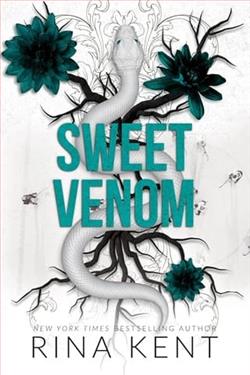Page 108 of Strays
Scouse answers on the first ring. We give her what we’ve got: delivery truck ID, vehicle plates, timestamps, and the hum behind the wall that doesn’t belong.
Thirty minutes later, the task force rolls up. Scouse shows up with four agents in tactical vests and one supervisor from DEA logistics. They move fast and efficiently, but they can’t find any entrance to the building from the side lot either.
The place’s registered as vacant. No flagged business license. No reason to break entry unless someone pushes.
Shane steps forward. “We’re telling you, there’s a freezer inside.”
Scouse watches us for a long second, then nods once. “Pop it.”
An agent moves to the front door and wedges a pry bar at the frame. A loud metallic crack echoes down the street, and the door swings inward with a long groan.
We’re the first ones through. And it’s empty.
Just one big concrete shell. Nothing but bare walls and our own footsteps bouncing off them. The agents get in after us and exchange looks. One of them scoffs.
Jay walks slowly along the back wall, his fingertips trailing. “There’s something off.”
Another agent chuckles under his breath. Scouse’s face doesn’t hide her annoyance.
But then, Jay stops and knocks once, and a hollow sound comes through. We all freeze. He knocks again, this time moving laterally. Another hollow thud. Then one section goes dull, solid.
He glances back. “There’s a false wall.”
Scouse steps forward. “You’re sure?”
“Positive.”
The agent with the pry bar steps in. He presses a gloved palm flat against the surface, pushing experimentally. "It's drywall," he mutters.
He wedges the pry bar into a seam near the floor and leans his weight into it. The panel groans, flexing under the pressure. A loud crack splits the air as the drywall gives, tearing away from the frame.
The smell hits me: ammonia and freezer burn.
The hidden room is narrow, maybe ten feet deep. Three thin mattresses lie directly on the floor, blankets crumpled in the corner. There’s a crushed food wrapper, a single flip-flop and a hair tie. No airflow, no windows.
Flush with the wall sits a compact industrial freezer, the kind used in butcher shops or vaccine storage. It’s locked. One agent signals, and another jogs back to the car to grab a crowbar. A minute later, the agent jams it in, and the lock snaps open with a sharp crack.
Inside, stacks of insulated lunch-sized coolers lined up like inventory, with frost clinging to the edges. The agent unzips the first cooler and peels back the insulation. It’s crammed with thin silver packets, rows and rows of them, packed tight like decks of cards.
Jay pulls one out and turns it in his hand. It’s heat-sealed. "What the hell is this?" he says.
He opens it carefully and finds a single gel capsule about the size of a vitamin, translucent blue and frozen solid. He holds it up between two fingers. “They’re dosing them one at a time. Ready to sell. Just like that.”
We’re still staring at the capsule when Shane asks, "You smell that?"
I do. Faint, but it’s there. Human. Recent. Not blood. Not rot. Just skin and sweat.
“This wasn’t just a stash house,” I say. “Someone was kept here.”
Jay moves to the far wall, scanning the corners. “There has to be a way in from the side lot,” he says. “That’s where they came out.”
Shane’s already crouched near the back. “Here.”
There’s a trapdoor in the floor, right next to one of the mattresses. Rough plywood, scuffed and worn. Shane grabs the edge and tries to lift, but it doesn’t move.
“It’s locked,” he mutters. “From the outside.”
One agent steps in with the pry bar. A sharp crack echoes through the room as the latch gives. Shane hauls the trapdoor up, and a wave of moist, dirty-smelling air hits us.















